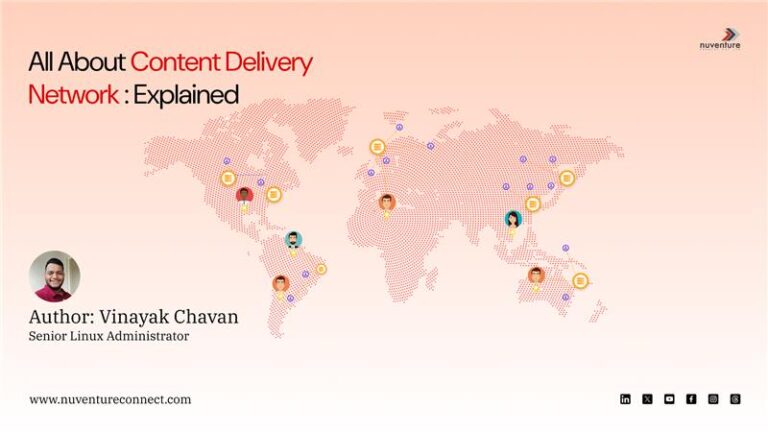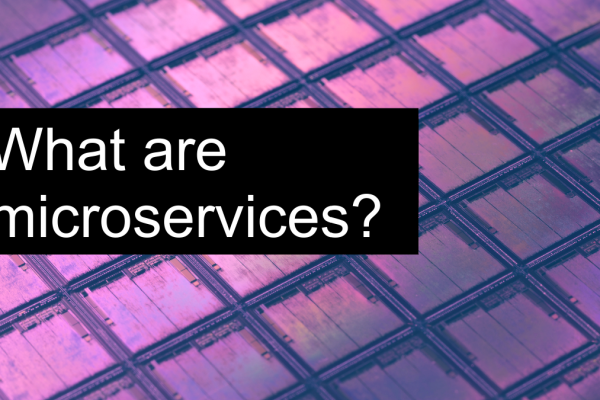Due to the increase in demand for speedy and efficient content delivery, advanced solutions like the Content Delivery Network (CDN) appear. But what does CDN mean?
It’s a network of strategically positioned servers aimed at enhancing the speed and dependability of delivering content to users in various locations. These servers store cached copies of content, varying from web pages to videos, guaranteeing that when a user gives a request, it’s served from the closest server available. This decreases the delays and speeds up loading times.
When a user requests specific content, CDN architecture plays its game. It redirects the request to the nearest server, taking into account factors like server health and proximity. This guide will help you learn all about the Content Delivery Network and how it works.
What is a Content Delivery Network?
A Content Delivery Network (CDN) is a network of servers spread out across the globe that work together to deliver content to users faster. Imagine a website stores its content on a server in one location, say California. When someone in India tries to visit that website, the data has to travel a long distance, which can make the website slow to load.
A CDN helps by storing copies of that website’s content on servers all over the world. So, when someone in India tries to visit the website, their computer can download the content from the nearest CDN server instead of having to wait for it to travel all the way from California. This makes the website load much faster for the user
Check the benefits of using a CDN:
Faster loading times for websites
Improved performance for streaming media
Increased reliability and availability of websites
Protection against DDoS attacks
If you’re running a website, especially a website that gets a lot of traffic from around the world, then using a CDN is a great way to improve the user experience.
What is the use of a Content Distribution Network?
The main use of a Content Delivery Network (CDN) is to speed up the delivery of content to users by geographically distributing website assets. Check how amazingly it works:
Reduced Distance: The cached content from the world gets gathered on the server to bring users closer. Instead of fetching everything from a single origin server, users can download content from a nearby CDN server, significantly reducing travel time.
Faster Loading Times: By minimizing the distance data needs to travel, CDNs ensure web pages, images, and videos load quicker, improving user experience.
Improved Performance: CDNs are particularly beneficial for bandwidth-heavy content like streaming media. It distributes the load, reduces the strain on the original server, and enhances overall performance.
Increased Reliability: CDNs provide redundancy by having multiple copies of content stored across various locations. If one server experiences an outage, users can still access the content from another server to minimize the downtime.
Security Benefits: Some CDNs offer DDoS mitigation features, helping to protect websites from malicious attacks aimed at overwhelming them with traffic.
CDN Architecture and Key Components
Below mentioned is the easiest model of a Content Delivery Network, its key components, and their roles mentioned below:

Delivers Content: The entity aims to deliver the content.
Authorization: The CDN provider gets permission from the content provider to deliver the content.
Reporting: The content provider demands performance analytics from the CDN provider to monitor the quality of the CDN provider’s service and have ingress to other suitable data.
Source: The content provider is responsible for delivering a copy of the content.
Content: The digital information developed or licensed for distribution.
Request: The user gets permission from the content provider to view or locally store the data (content).
Deliver: The user can see the content.
User: The entity requesting data that is content from the content provider.
How Does a CDN Work?

If you are a pizza lover, this example will work well for you to understand it better.
Imagine you order a pizza from a restaurant across town. The traditional way the internet delivers content is like having that restaurant make your pizza fresh every single time you order. This can be slow, especially if you live far away.
A Content Delivery Network (CDN) works like a local pizza place that keeps some pre-made pizzas hot and ready to go.
Request for Content: You (the user) request a webpage from a website.
DNS Lookup: Your computer’s DNS (Domain Name System) acts like a phonebook. It looks up the website’s address and finds the nearest CDN Point of Presence (PoP) that has the content cached.
CDN Makes a Decision: The CDN’s control center, the Content Delivery Engine (CDE), figures out the best way to get you the content. If the content is available at the nearest PoP…
Content Served from Cache: Bingo! The CDN delivers the content directly from the cache server at the PoP, which is much faster than getting it from the source.
Content Fetched from Origin (if not cached): If the content isn’t cached at the nearest PoP, the CDN fetches it from the original website’s server (origin server) and stores it at the PoP for future requests. It then delivers the content to you.




